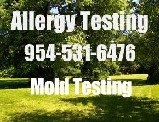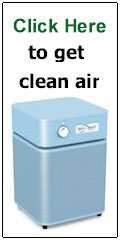Water Leaks - Stopping Toxic Mold From Growing
One of the biggest problems we find in our Environmental Inspections is poor quality maintenance of the exterior part of homes, condos or apartments. For instance, yesterday, we did an inspection of a house that was painted 3 years ago, it was a poor quality paint job also. There were approximately 59 cracks on the entire house that were allowing moisture to enter the house. This creates a serious problem especially in a hot and humid climate. Every time it rains, the crack separates a little more and allows moisture to enter the home and thus causes toxic mold. That is why it is important to monitor the exterior of your house for cracks. My own house, I inspect and repair all cracks every 6 months so it does not get out of hand. If you do not, black mold will eventually start forming on the interior walls behind the drywall. This is a given not a possibility. When we do our inspections, the first thing we do is walk the exterior looking for cracks, that way it makes it easier to find a wet wall on the interior of the house. If you are not a professional, it is important to determine the cause of the crack. This may be a job for a pro such as a licensed General Contractor. They can look and just tell you why the crack is there. Cracks can also form from water leaks that get under the stucco. If you want to repair your own masonry cracks, the following tips can be helpful in solving your problem. These tips are not set in stone, so if you encounter a problem, consult with a licensed General Contractor before continuing on with the work or repairing the cracks.
1. Before you attempt to fix a crack in a masonry or stucco wall, look closely at the wall. Look above it for additional cracks especially if it looks like a moisture crack from above. 2. If it is a moisture crack, you must find where the moisture is coming from. Then investigate and solve the reason for the water leak that will stop it. Remember that unless you treat the cause of the moisture, the repair will only be temporary and will return. 3. Foundation cracks are not to be repaired by a homeowner. Example, a long crack along the lower area adjacent to the floor level. I found one the other day that was 20 feet long, recommended to the client they retain a Structural Engineer to look at the problem. This is an example of a more serious problem starting to happen. 4. If you are planning on doing the crack repair yourself, use a chisel or a thin masonry grinder wheel to remove the mortar to a depth of 1/2 inch. It should be in outside in V-cut to get it to stick in crevice. Clean out the area, clean it and then wet the area. Let area dry a little before applying the new mortar. The area should be damp not wet. You can pick up the mortar at at Home Depot or Lowe's. When you mix it, use it before 15 minutes or it will crack on you. Do not apply in full Sun Light, only in shade. 5. Trowel it on the crack (push it in the V-Cut crack) and let it dry. Keep area damp for 3 days to prevent cracking. If crack is over 3/8 inch, it should inspected by a professional. If you have never done this before, it might take a little practice. Let it dry overnight. Do not paint this area for thirty days till it cures. If you do not let the mortar cure, the paint might peel on you. In conclusion, moisture from cracks in masonry walls can cause toxic black mold that can affect people with Asthma and Allergies. If you do not know what you are doing, consult with a licensed General Contractor to determine the cause of the masonry cracks. A masonry crack on a lower wall can be a foundation crack and must be inspected by a Structural Engineer. If you are going to attempt to fix your own masonry cracks, do not use caulking. It is only a temporary fix. By using masonry mortar applied properly to a wall crack that has be prepared the right way, the repair will be permanent. If you have any questions, feel free to contact us or visit our website.
|




